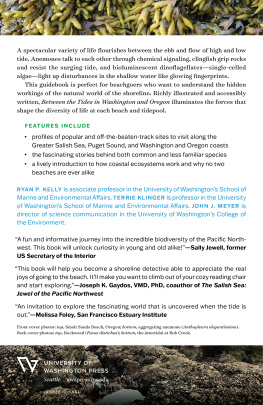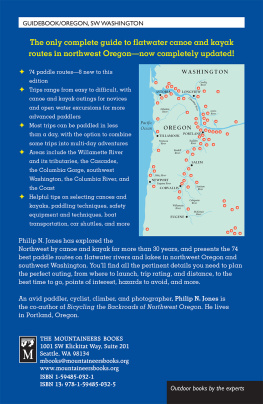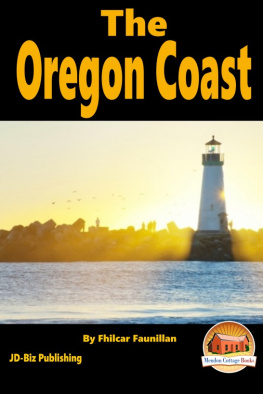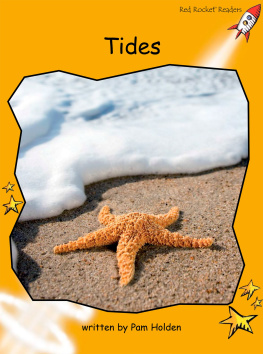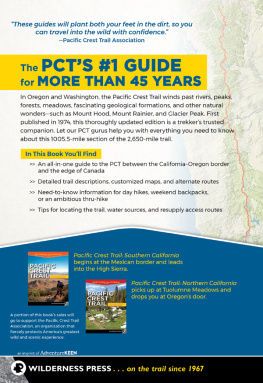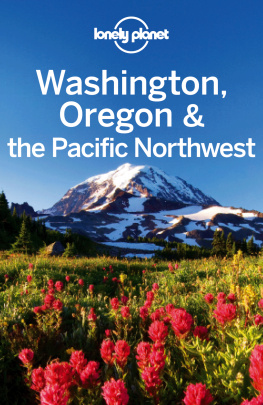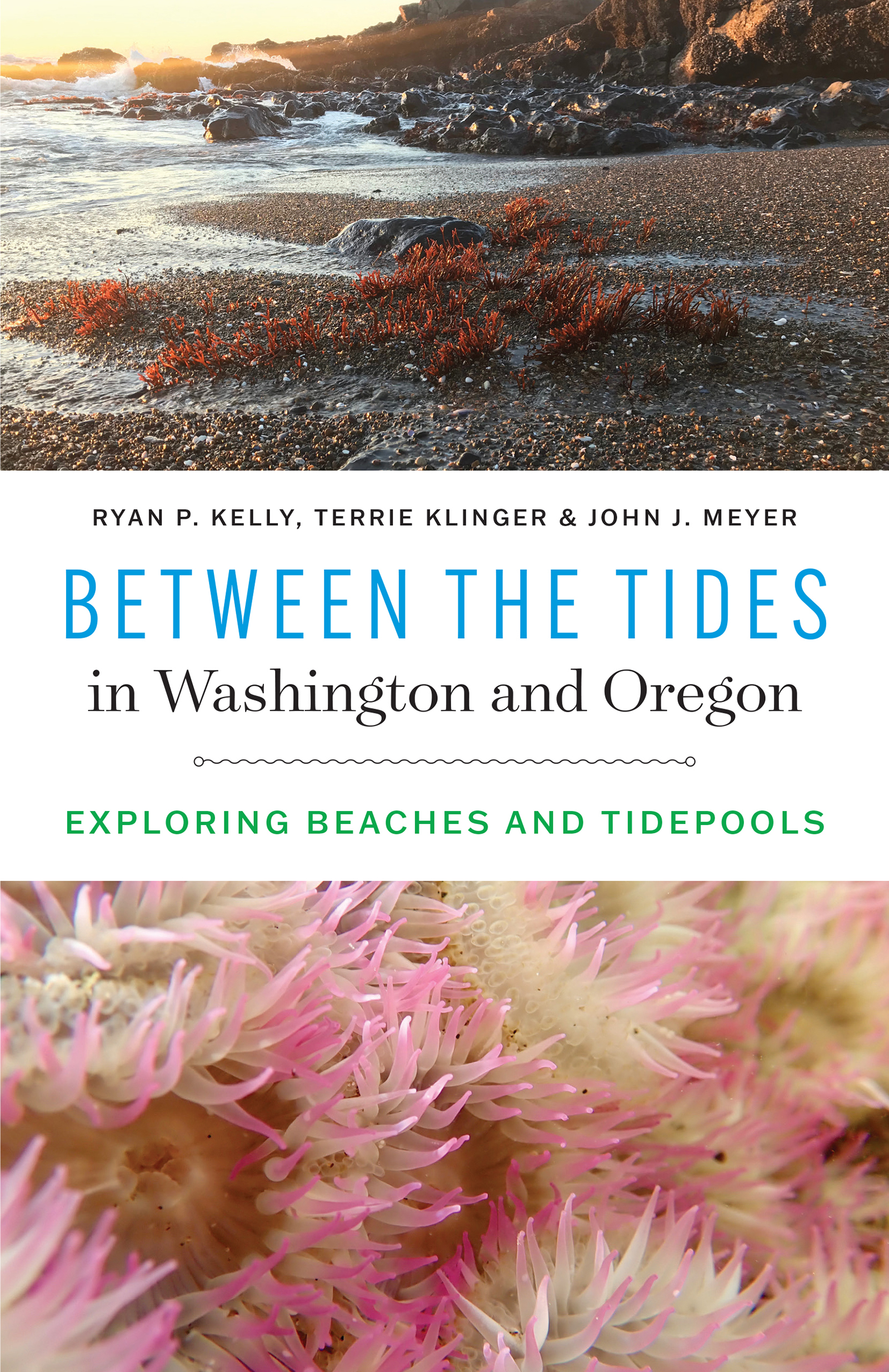Contents
Guide
Pagebreaks of the print version
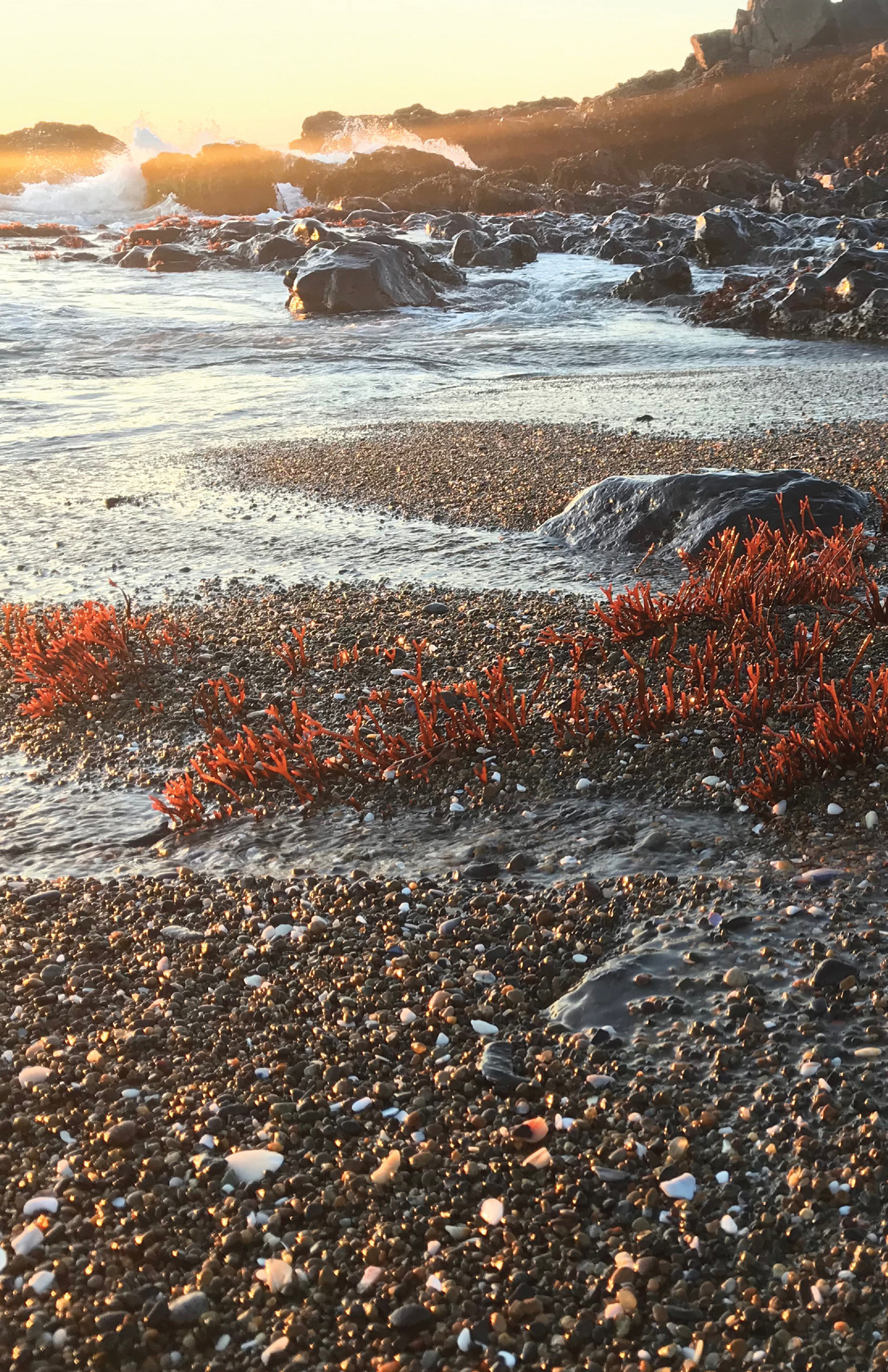
RYAN P. KELLY, TERRIE KLINGER & JOHN J. MEYER
BETWEEN THE TIDES
in Washington and Oregon
EXPLORING BEACHES AND TIDEPOOLS
UNIVERSITY OF WASHINGTON PRESS
SEATTLE
A Ruth Kirk Book
Between the Tides in Washington and Oregon was published with the assistance of a grant from the Ruth Kirk Book Fund, which supports publications that inform the general public on the history, natural history, archaeology, and Native cultures of the Pacific Northwest.
This book was also made possible in part by a generous gift from Suzanne Ragen, in memory of Brooks Ragen.
Additional support was provided by the Samuel and Althea Stroum Endowed Book Fund.
Copyright 2022 by the University of Washington Press
Design by Derek George / Composition and layout by Doug Goewey
Composed in Ashbury, typeface designed by Dieter Hofrichter
262524232254321
Printed and bound in China
All rights reserved. No part of this publication may be reproduced or transmitted in any form or by any means, electronic or mechanical, including photocopy, recording, or any information storage or retrieval system, without permission in writing from the publisher.
Photographs by the authors unless otherwise noted.
UNIVERSITY OF WASHINGTON PRESS
uwapress.uw.edu
LIBRARY OF CONGRESS CATALOGING-IN-PUBLICATION DATA
Names: Kelly, Ryan P. (Ryan Patrick), author. | Klinger, Terrie, 1956 author.
Title: Between the tides in Washington and Oregon : exploring beaches and tidepools / Ryan P. Kelly, Terrie Klinger, and John J. Meyer.
Description: Seattle : University of Washington Press, [2022] | Includes index.
Identifiers: LCCN 2021034648 (print) | LCCN 2021034649 (ebook) | ISBN 9780295749952 (hardcover) | ISBN 9780295749969 (paperback) | ISBN 9780295749976 (ebook)
Subjects: LCSH: Coastal ecologyWashington (State)Guidebooks. | Coastal ecologyOregonGuidebooks.
Classification: LCC QH105.W2 K45 2022 (print) | LCC QH105.W2 (ebook) | DDC 577.5/109797dc23
LC record available at https://lccn.loc.gov/2021034648
LC ebook record available at https://lccn.loc.gov/2021034649
This paper meets the requirements of ANSI/NISO Z39.48-1992 (Permanence of Paper).
For the very curious, in particular the ones I live with
RYAN KELLY
For all my teachers, and especially Paul Dayton and Rob DeWreede, with deep appreciation
TERRIE KLINGER
For Adrienne, whose love for the ocean and its creatures is boundless
JOHN MEYER
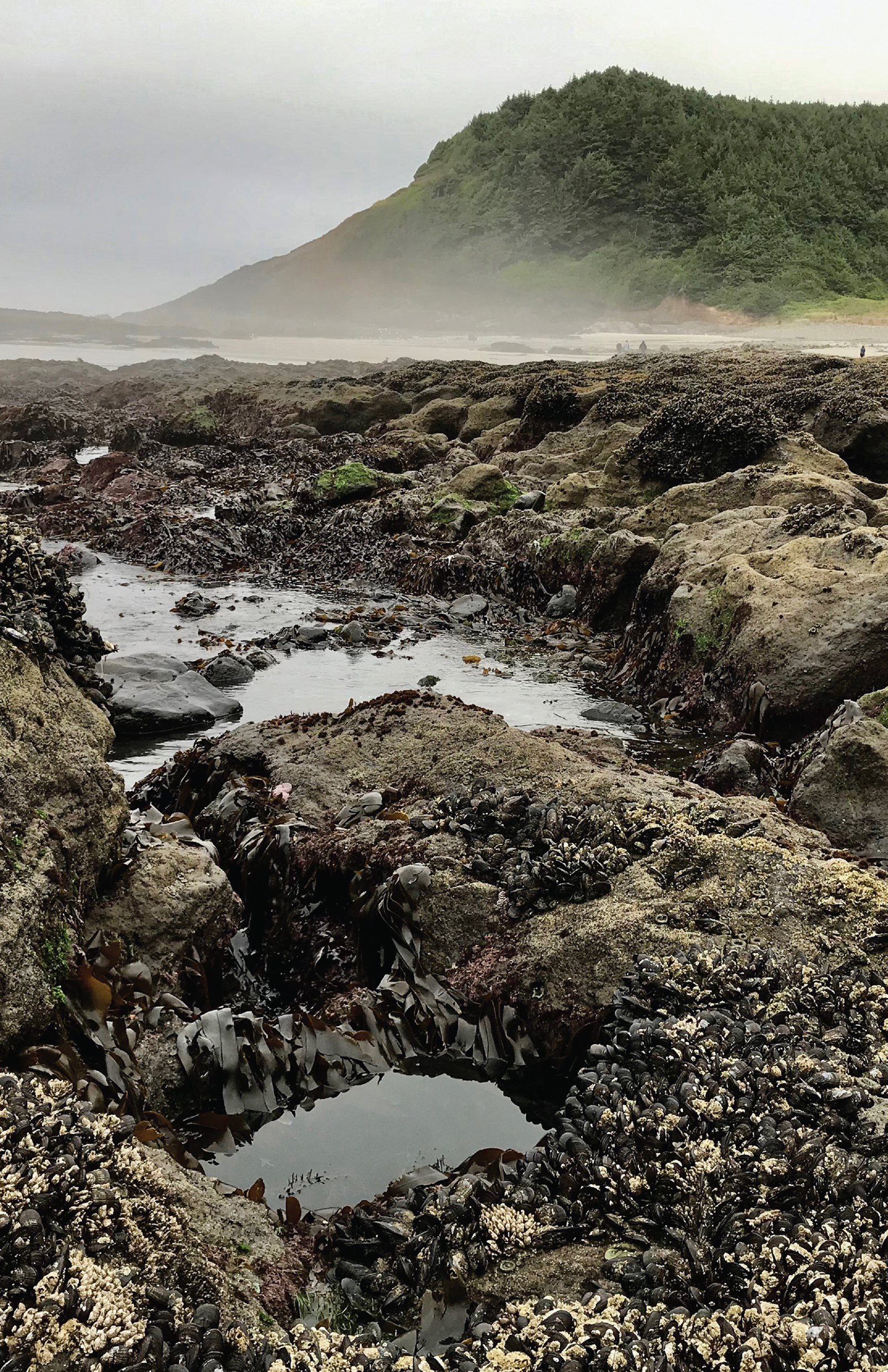
CONTENTS
INTRODUCTION
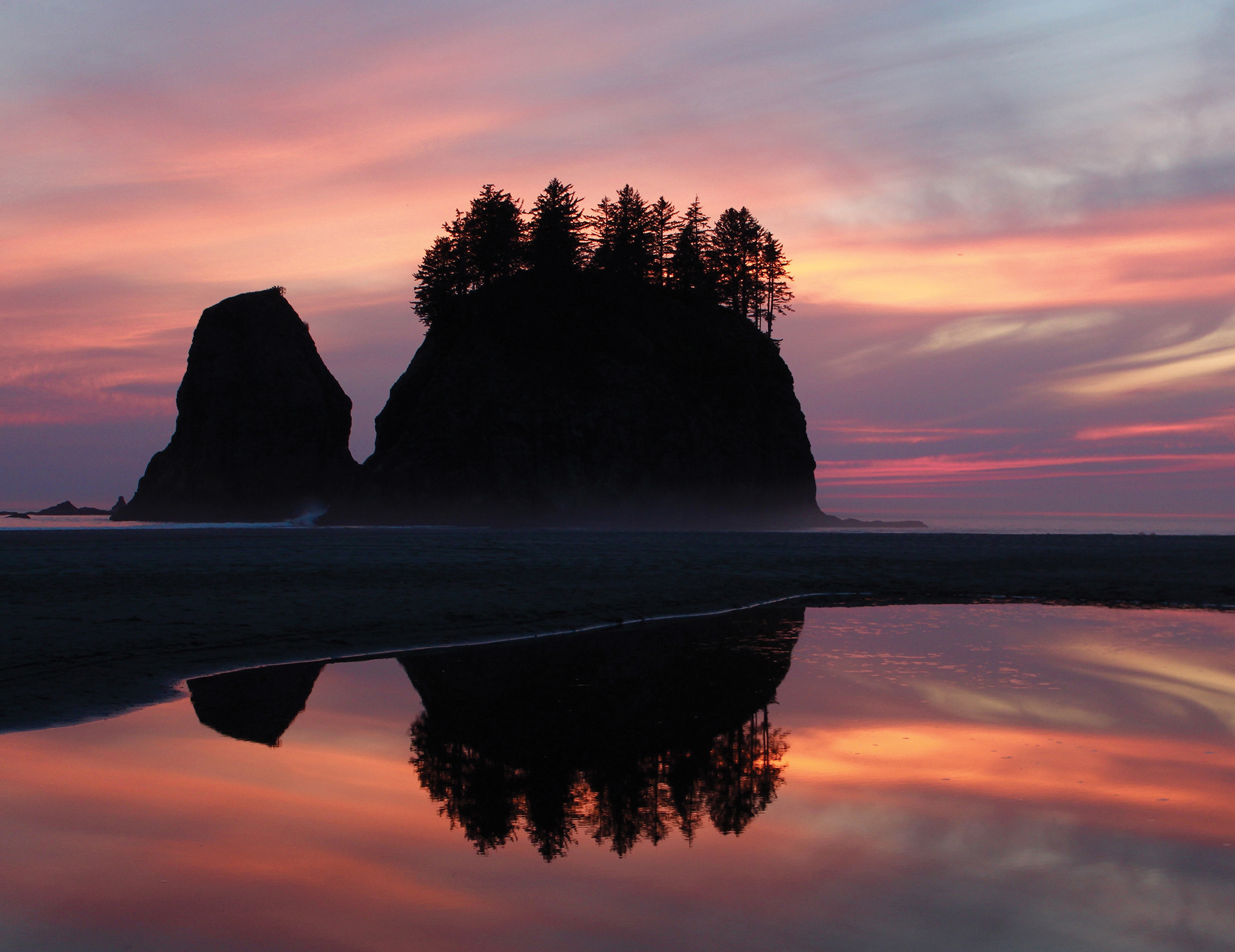
The sun sets on the Washington coast at Second Beach, Olympic National Park

You can tell what people love by what they do in their free time: musicians, after hours, playing together in empty rooms; chefs cooking for one another. Those drawn to the shore are the same. Break time at a meeting of marine biologists will find many facedown on the rocks, surveying and exclaiminga busmans holiday.
What draws us to the coast? A sense of dynamism and forces larger than us, perhaps. Or a human urge to see the edge of things. The coast lets us peek under the rug of a different world.
Its captivating, in part, because it hints at very different ways of being alive on this planet. And yet its easily accessible. We can often walk or drive to get there. Power, beauty, mystery, and enchantment are an intoxicating mix for locals and the most casual visitor alike.
Some lucky people go to the shore for a living. Of these, a few have the privilege to study the coastline and write about it. We count ourselves among these few.
We hope to capture that sense of bottomless curiosity, aesthetic and scientific attraction, and even adventure. This is an easy sell; the US West Coast already gets millions of visitors each year. But like many things, the shoreline becomes far more interesting as you learn more about it. Our real goal, then, is to uncover some of the hidden workings of the coast, to show why the shore near Seattle, Washington, is different from the shore near Astoria, Oregon. Building up a sense of how the coast workswhich creatures live where, and whydeepens our sense of wonder and gives us more reasons to keep coming back.
Ecology is the study of what lives where, and why. It is the search to reveal the processes behind the patterns we see in the living world. Of course, this undertaking assumes that we have noticed patterns in the living world in the first place. Some of these are obvious: tropical plants dont grow well in Seattle, for example, and freshwater fish dont live in the ocean. But many more subtle patterns surround us. And moreover, do we ever ask about what drives these patterns, whether theyre obvious or not?
We go to the beach and we see various plants and animals living on the rocks in the surf zone, but rarely do we wonder why they live in one place and not another. Its not trivial to ask why a particular snail lives under a rock, but a limpet lives on top of the same rock. Or why you see barnacles even at high tide, but only the lowest tide exposes many of the sea stars, brittle stars, and the like. We can ask the same question at a larger scale as well: why, for instance, does one sea star live in northern California and Oregon, while a different one lives in southern California and Baja California? These are some of the questions that have fascinated ecologists since before the discipline had a name.
This book is about why, rather than what. Its about process, rather than merely the patterns those processes create. Taken this way, a day at the shore becomes a detectives adventure, with each species found there signifying something about the environmental conditions and the other species present. A mussel shell lying on the sand isnt just sceneryits a clue: it means mussels live here or nearby. Which mussel is it? Knowing something about this tells you whether conditions tend to be calm or rough. Is the shell whole or fragmented? This might tell you about how the mussel was dislodged or eaten. If the shell is whole, does it have a small hole drilled into it? If so, thats probably a mark of a predatory snail (which also must live nearby; the shape of that hole can tell you which species of snail). Is there anything growing on the mussel shell? Barnacles, small tube worms, algae, et cetera? More clues about the conditions at the site.
It is great fun to recognize living creatures as you walk through the world. For many, this can be like seeing old friends, and it lends a sense of place and belonging and connection. But even more deeply, if each living element in a location is a clue about the inner workings of the world, learning about just a few species can spark a durable inquisitive flame. This kind of inquiry, this worldview, is what ecology is all about.

